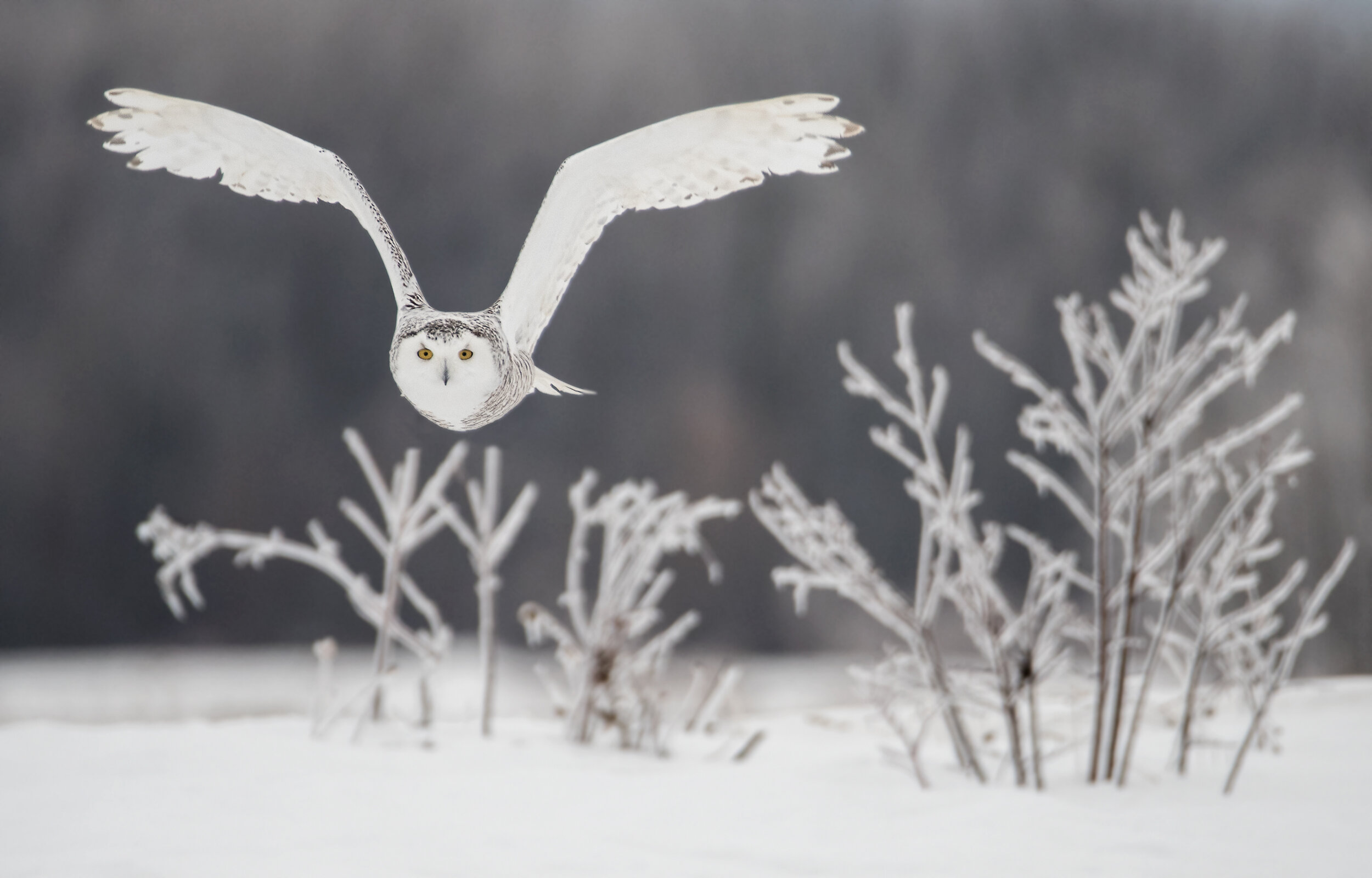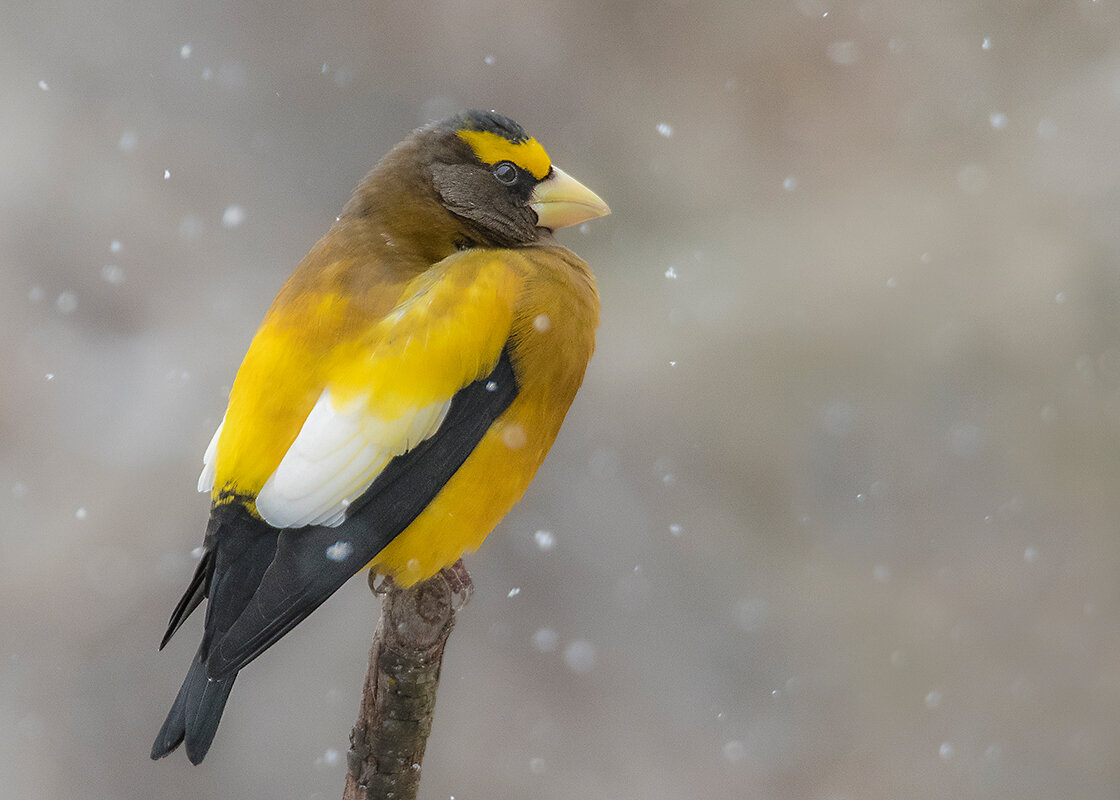Photographing From A Blind
Shooting from a photographic blind can be very useful, particularly when photographing wildlife that is not used to seeing humans in their environment. I do not often use a blind, but there are definite situations where I do. – Photographing local birds – a local fox den – a known area where animals are known to use as transition areas – If you find a carcass in the wild.
Why Use a Blind? – Photographing wild animals is sometimes only achieved by using a blind to hide your presence. If you are not seen, heard or smelled by the subject, you have a good chance to capture behaviors that you wouldn’t otherwise see if they are aware of your presence.
Types of Blinds – Several types of blinds are available for use, including the permanent blind, the temporary blind you can set up using items found on-site, and your own portable blind. Each type has its advantages and disadvantages.
The blind that I use is the Rhino R75 2 Person Hunting Ground Blind. Constructed of a True 150 denier polyester - 150 denier thread in both the horizontal and vertical weave.
The blind is easy to set up and takedown - with a little practice setting the blind up can be accomplished quickly in as little as 60 seconds once the blind is out of the carry bag.
The blind is designed to withstand the most inclement weather conditions you dare to be caught in; rain, snow, hail, wind. The blind is treated with a durable water repellent to protect and an antimicrobial to help prevent mold and mildew ensuring you a quality product
The Permanent Blind – The permanent blind is a permanent fixture. The permanent blind is usually built using lumber or some other type of weather-resistant building materials. If you fabricate a permanent blind on your own property, or if you get permission to place a permanent blind on someone else’s property, then a permanent blind can be invaluable. Once installed, it will remain when you are not there. The animals will become more accustomed to the structure.
A disadvantage of the permanent blind is that it cannot easily be moved. If the animal of interest decides to move its location, or the light is not where you want it to be the blind will no longer be beneficial. And let’s face it, most of the time you want to use a photographic blind, it will be on public or private property, where a permanent structure is not allowed.
The Temporary Blind – The temporary blind is one of the most useful. You can carry it with you and set it up wherever it is most beneficial. Temporary blinds can be as simple as a large piece of burlap or camouflaged material like camo netting strung between two trees. It’s simple to put up, easy to carry, and takedown and can be used to blend in effectively with the local area flora and fauna.
One of the disadvantages that I have found with the temporary blind is that they are something you have to carry around with you. A temporary blind is also not good weather protection.
The Personal Blind – The personal blind is simply a large, camouflaged material that you throw over your body. A lot of people use these and have great success with them. I find it very uncomfortable to have something like a Ghillie suit on my body.
I prefer the personal blind structure like my Rhino blind. I have a carrying case that allows me to carry it on my shoulders.
Location of Your Blind – In order to get the most out of using a photographic blind, you have to follow that golden rule of “Location, location, location.”
How do you find the right location? I would go back to the research that we discussed earlier in the book. Look for a location near a water source. Take a hike in an area and look for tracks or other signs of activity like bedded areas in the long grass. Look for feces or skeletal remains. You can also set up a trail camera where you suspect activity. Let the camera sit for a week, then see if this looks like a good spot for a blind.
If you capture wildlife, note the times of the day and plan to set up your blind long in advance of when the wildlife was captured by your trap camera.
Tips for Using the Blind – To get the most out of your blind, here are a few simple rules you should follow.
Get to the location and set up the blind before the wildlife arrives. Pay attention to the direction of the lighting and the background that you will be dealing with. The more preparation ahead of time will help you when the wildlife shows up.
Wait in the blind until the wildlife has gone. If you want the wildlife to continue using this area you must minimize your presence in the wild.
Make the blind comfortable – You will likely spend hours at a time in it, so make it as pleasant as possible. Take bottled water and food with you and use a portable chair/seat (if you have room). You might also want to invest in a disposable urine bag with gel on the inside to soak up your urine. Seems a bit excessive, but it is important that you stay in your blind, minimize movement, and not be seen,
Minimize Movement and Sound – If your camera has silent mode I would suggest you use that. That sudden burst of photographs by the shutter is sure to startle birds and wildlife. If your camera does not have silent mode it may be best to shoot single shots and wait a few seconds between shots.
Leave No Trace – When you are taking down your blind please make sure that you pick up all your garbage and minimize your impact on the environment.
Check out my latest Wildlife eBook to learn more ways to capture better wildlife images.



